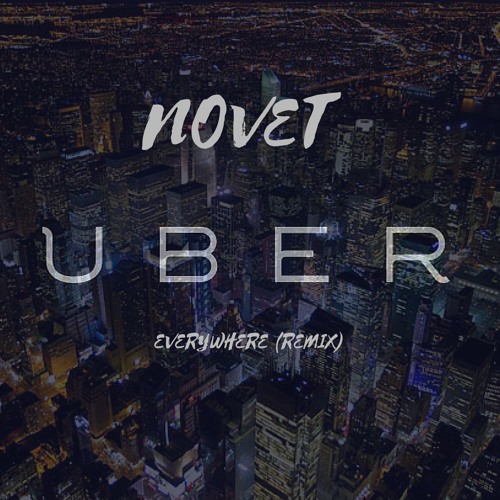
When I first moved to Los Angeles, I discovered that I could simply Uber everywhere. It is possible, in the age of the smartphone, to live in Los Angeles without getting behind the wheel. But thankfully, Uber saved my non-driving ass from permanent immobility. Drive.įive or 10 years ago, this would have been social suicide. It’s not that I simply don’t have a car, or possess an expired license, or am living under the drunken shadow of a DUI.
#Uber everywhere how to
DOI: 10.1002/widm.I live in Los Angeles, and don’t know how to drive. ‘ On the Determinants of Uber Accessibility and Its Spatial Distribution: Evidence from Uber in Philadelphia‘, WIREs Data Mining and Knowledge Discovery (2020). Lastly, if some sort of communities’ voice-hearing approaches are conducted, such as online surveys and focus groups, they may help scholars to understand where the issues of such services exist and attempt to bold those barriers to the policy makers and authorities for resolving them. If these types of services improve, the quality and affordability of other modes of transportation such as buses, trains, taxis may improve in order to be able to compete.

Investigation on ride-sourcing programs such as Uber would enhance the quality of these services and thus provide a comfortable, affordable, and accessible transportation mode for people. This study may help transportation planners, ride-sourcing providers, cities’ authorities, and policymakers to understand where the issues exist in rideshare accessibility and attempt to resolve them, at least (for now) in the city of Philadelphia. The result also shows that Uber is more accessible in denser areas, and that it is less accessible in neighborhood with more amenities within a walkable distance - accessing amenities in these neighborhoods is simpler for residents, which leads to a lower demand for Uber.
#Uber everywhere drivers
High demand in these areas leads to a higher surge price, which in turn attract more drivers and leads to lower waiting time. However, areas with higher crime incidents motivate residents to take Uber more often for the safety issues, which in turn leads to a higher demand. Uber drivers may want to avoid providing service in areas with a high crime rate and discriminate against these areas. The surprising result that may contradict ones intuition is that Uber is more accessible in areas with a higher crime rate. There are several factors impacting demand in the ride-sourcing platforms such crime rate, population density and walkability of the neighborhood. Therefore Uber is more accessible (that is, the wait times are less) where there is demand. Uber surge price algorithm dynamically prices its services to equilibrate demand and supply, i.e., it increases prices in neighborhoods where demand is high and decreases it otherwise, which motivates drivers to move to where demand is. Uber surge pricing is the main reason behind this unbalanced network. The result of this study shows that Uber accessibility is not balanced in different neighborhoods. Shokoohyar (Saint Joseph’s University), Sobhani (Utrecht University), and Nargesi (University of Texas at Arlington) investigated the determinants of Uber accessibility in the city of Philadelphia. In a recent study published in WIREs Data Mining and Knowledge Discovery, Drs.


Since ride-sourcing platforms are in huge demand, studying factors that affect its accessibility is critical because it would be helpful for ride-sourcing providers and authorities to understand where the accessibility to these types of services is low and try to improve it. However, this makes manging availability of the drivers very challenging as they are independent contractors. This felexibility provides options for them in terms of times and locations where drivers are comfortable to serve. In ride-sourcing platforms, drivers can flexibly choose where and when to provide ride services as they are independent contractors. Tom Goodwin the senior vice president of strategy and innovation at Havas Media once said, “Uber, the world’s largest taxi company, owns no vehicles.

Uber serves in more than 858 cities in 83 countries, serving approximately 75 million riders with 3 million drivers. Ride-sourcing platforms such as Uber or Lyft, which operate using mobile apps to connect riders with drivers, have gained extensive popularity due to their convenience, lower cost, and faster services in comparison with traditional taxi systems - 50% cheaper than regular taxies.


 0 kommentar(er)
0 kommentar(er)
